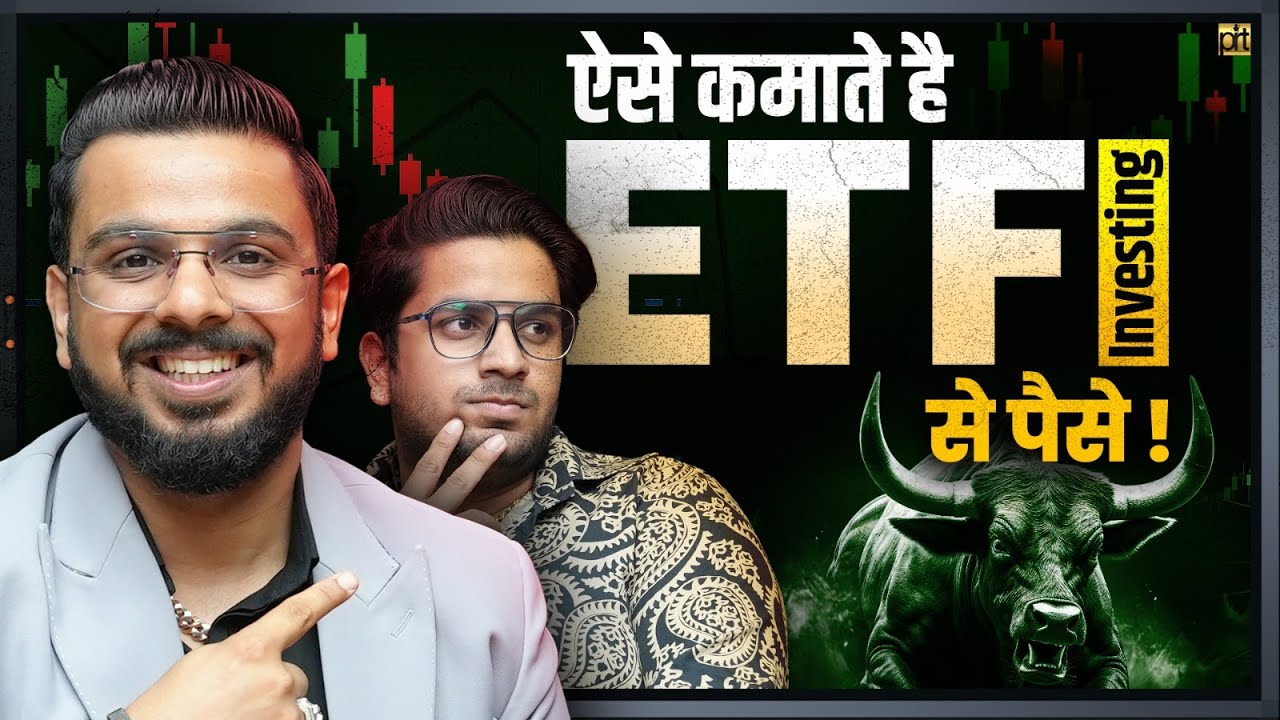Buy These 5 ETFs To Replace Your 9-5
Summary
TLDRThis video offers a strategy for achieving financial freedom through long-term investment in ETFs (Exchange-Traded Funds). It emphasizes the importance of consistent, automatic investing regardless of market conditions, and reinvesting dividends to build a larger income stream. The focus is on maximizing dividends by accumulating shares and allowing these funds to replace active income over time. The speaker suggests a decade of sacrifice and strategic investment to achieve financial independence, where passive income can eventually cover living expenses, providing more freedom and lower tax rates compared to active income.
Takeaways
- 😀 Consistent investment in ETFs, regardless of market conditions, is essential for building long-term wealth.
- 😀 Dollar-cost averaging (DCA) helps mitigate risk by investing regularly, whether markets are up or down.
- 😀 The key to success in ETFs is accumulating more shares over time to maximize dividend income.
- 😀 Reinvesting dividends through a DRIP (Dividend Reinvestment Plan) helps you buy more shares automatically, growing your investment.
- 😀 Taxes on dividends should be considered, even if reinvested back into the fund.
- 😀 Building a significant stream of passive income requires a long-term commitment, often 10 years or more.
- 😀 Sacrificing short-term spending and aggressively investing can lead to financial independence over time.
- 😀 Your investment income can eventually replace your active income, offering financial freedom to quit your job.
- 😀 Passive investment income is generally taxed at a lower rate than active income, making it more efficient in the long run.
- 😀 A solid investment strategy takes patience; results may take decades, depending on your level of aggressiveness and investment choices.
- 😀 Achieving financial independence through dividends is about making smart, consistent decisions and being disciplined with your investments.
Q & A
What is the primary purpose of investing in ETFs according to the script?
-The primary purpose of investing in ETFs is to generate passive income through dividends, and by accumulating more shares over time, you can increase the amount of dividends you receive.
How often should one invest in ETFs?
-One should invest in ETFs on a consistent basis, whether weekly, bi-weekly, or monthly. The key is to keep buying regardless of market conditions, whether the market is going up or down.
What is the 'DRIP' and how does it work?
-The 'DRIP' stands for Dividend Reinvestment Plan. It allows investors to reinvest the dividends they earn from their investments back into purchasing more shares of the same ETF, thereby compounding their returns over time.
What is the role of taxes in dividend income?
-Even though dividends can be reinvested, they are still subject to taxes. Investors need to account for tax liabilities when they receive dividend payments, regardless of whether they reinvest the dividends.
How long does it typically take to see significant returns from ETF investments?
-It usually takes at least a decade of consistent investing to see significant returns. Some investors may need 20, 30, or even 40 years depending on how aggressively they invest and the performance of the funds they choose.
What does the term 'decade of sacrifice' mean in the context of investing?
-'Decade of sacrifice' refers to the period where an investor sacrifices short-term pleasures or spending in order to aggressively invest and accumulate assets. The goal is to spend less and earn more to build long-term wealth.
What happens when your passive income replaces your active income?
-When passive income from investments replaces your active income, you achieve financial freedom. This means you can quit your job and still have sufficient income to fund your lifestyle.
How is investment income taxed compared to active income?
-Investment income, such as dividends, is generally taxed at a lower rate than active income, which can result in more favorable tax treatment for long-term investors.
What is the long-term objective of consistently investing in ETFs?
-The long-term objective is to build a substantial amount of shares in ETFs, which will generate a steady stream of passive income through dividends, potentially replacing your active income and securing financial independence.
What is the impact of market fluctuations on ETF investing?
-Market fluctuations should not deter an investor. In fact, downturns in the market are seen as opportunities to buy more shares, while bull markets should also be used to keep accumulating shares. The goal is to accumulate shares consistently over time.
Outlines

This section is available to paid users only. Please upgrade to access this part.
Upgrade NowMindmap

This section is available to paid users only. Please upgrade to access this part.
Upgrade NowKeywords

This section is available to paid users only. Please upgrade to access this part.
Upgrade NowHighlights

This section is available to paid users only. Please upgrade to access this part.
Upgrade NowTranscripts

This section is available to paid users only. Please upgrade to access this part.
Upgrade NowBrowse More Related Video

ETFs Vs PPRs: Qual o Melhor para Investir Antes do Ano Acabar?

Mutual Funds vs. ETFs - Which Is Right for You?

ETF Investment Guide | Best ETF for Buying | Step by Step Learn Stock Market Investing

Mutual Funds vs ETFs: The Brutal Truth (What 99% Investors Get Wrong) | Udayan Adhye

GUADAGNARE senza LAVORARE (Francesco Narmenni)

Mutual Fund Vs ETF | SIP & Lumpsum Investment in Share Market
5.0 / 5 (0 votes)